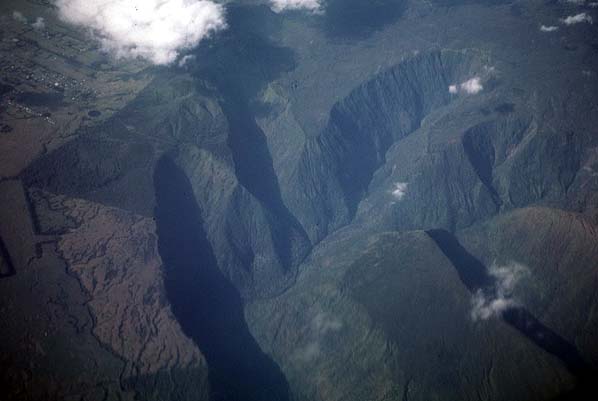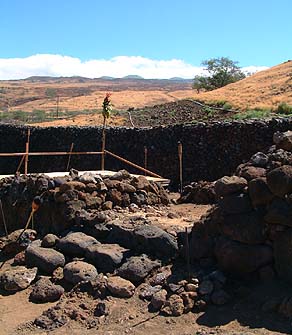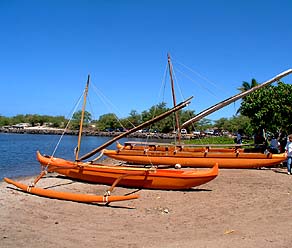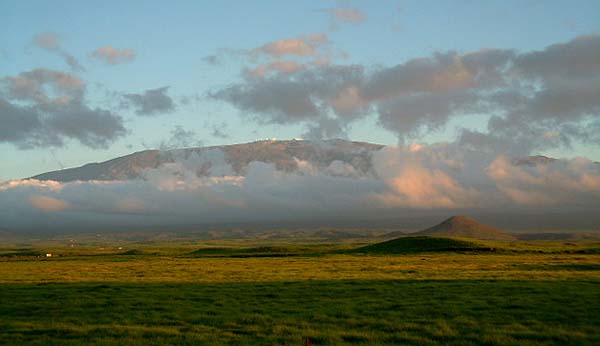 |
 |
 |
|||||
|
|
|||||||
| |
|
|
|
"If we look to the written accounts" Hannah says, "and some of the mo‘olelo [stories] that have come down to us, we can look to the time when Kamalalawalu came from Maui for war with Lonoikamakahiki of this island. I’m thinking that’s 17th century. At that time, there are accounts of the warring chiefs of both islands focusing on that coastline—the Kawaihae, Puako coast line. From there, we have the account of spies of Kamalalawalu taking coastal trails, and surveying the coastline from South Kohala into North Kona, and getting an inaccurate impression of the number of people that resided in these Districts."
|
||
|
|
||
Hawaiian historian Samuel Kamakau (1992) writes of how these spies landed at Kawaihae and began scouting the Kohala area to see how many people there were. Kohala was known to be densely population. But when they returned to their chief, they said “We went all around Hawai‘i. There were many houses, but few men. We went to Kohala and found the men only on the shores.” From this event (and the subsequent battle) comes the phrase, “Le‘i o Kohala i ka nuku na kanaka”— “Covered is Kohala with men to the very point of land,” in reference to the great population of Kohala (Pukui 1983: #1973). “Kamalalawalu’s whole war campaign was based on this faulty information,” Hannah adds. Kamalalawalu landed at Kawaihae and found no one there. “The people had gone to Waimea,” Kamakau states, “for all observed the services at the heiau of Mailekini. Only those of lower Kawaihae and Puako remained.”
|
|
|
The real battlefield was at Waimea, but Kamalalawalu’s seers warned him against fighting there: “Waimea is not a good battle site for strangers because the plain is long, and there is no water. Should defeat be met with by the warring strangers, they will all be slaughtered. It is better to go to Kona and fight, as there will be a resting place for the canoes” (Kamakau 1992: 58). Kamalalawalu paid no heed, preferring to follow the advice of two old men of Kawaihae, who assured him that the battlefield would be good. “All canoes should be taken apart,” they further advised, “because the warriors may desire to run back to the canoes and depart in secret for Maui. The best thing to do is to cut up the canoes and the outriggers, for there are canoes enough in Hawai‘i. When it is conquered, there will be many canoes from Kona and Ka‘u. There will be much property for the Maui chiefs” (ibid.). This suggestion was carried out, and the canoes were broken up before Kamalalawalu took his army up to Waimea.
|
|
|
|
|
“The forces of Lonoikamakahiki rise up, as good patriots will, to defend their land,” Hannah says. “And Kamalalawalu is dispensed.” As his prophets had foretold, lack of water on the plains of Waimea became a key issue in the ensuing battle, and the Maui warriors were put to flight. Kamakau writes, “the retreat to Kawaihae was long. Yet there were many who did reach Kawaihae, but because of a lack of canoes, only a few escaped with their lives. Most of the chiefs and warriors from Maui were destroyed.” Kamalalawalu himself was killed on the grassy plains of Puako (Kamakau 1992: 60).
|
||
|
|
||
| "From the time of Kamalalawalu to Kamehameha, we continue to see tension, warfare, marriages between the Chiefs of Hawaii and Maui," Hannah points out. With the rise of a chief named Kamehameha, a far more ambitious set of battles were to come during his campaign to unite the islands. This feat was ultimately accomplished by building the heiau (temple) at Pu‘u Kohola.
|
||
|
|
||
|
|
|
|
|
|

|
| Kawaihae Home | Map Library | Site Map | Hawaiian Islands Home | Pacific Worlds Home |
|
|
|
|
|
|
|||
| Copyright 2006 Pacific Worlds & Associates • Usage Policy • Webmaster |
|||








